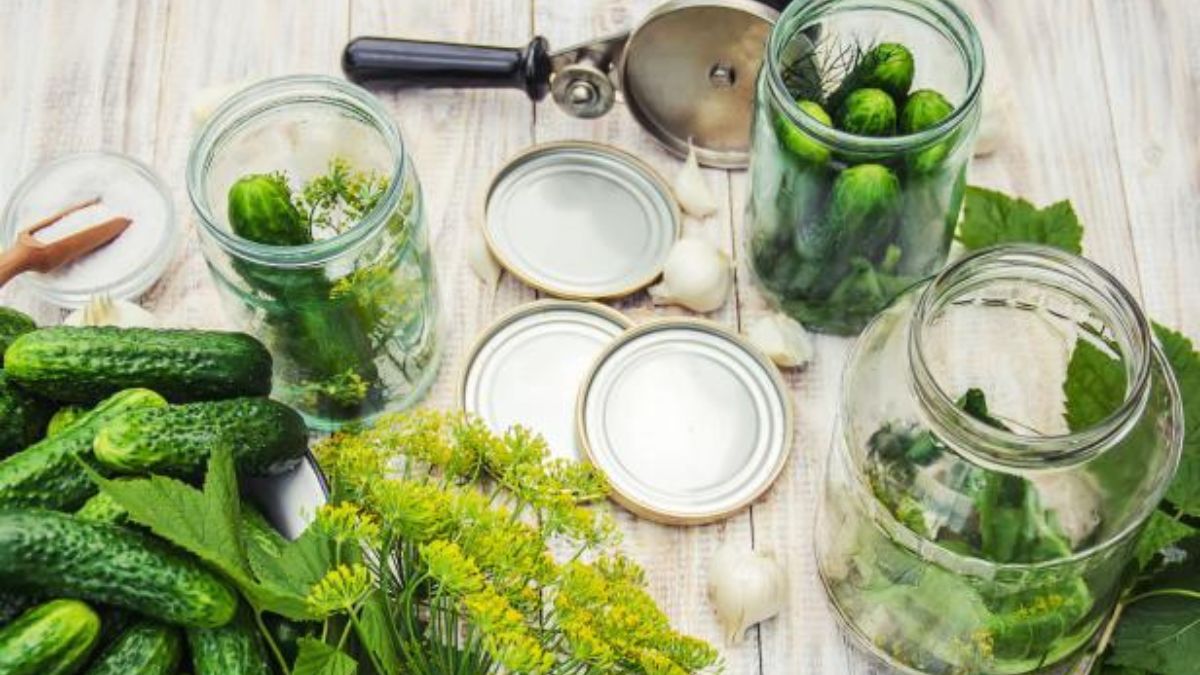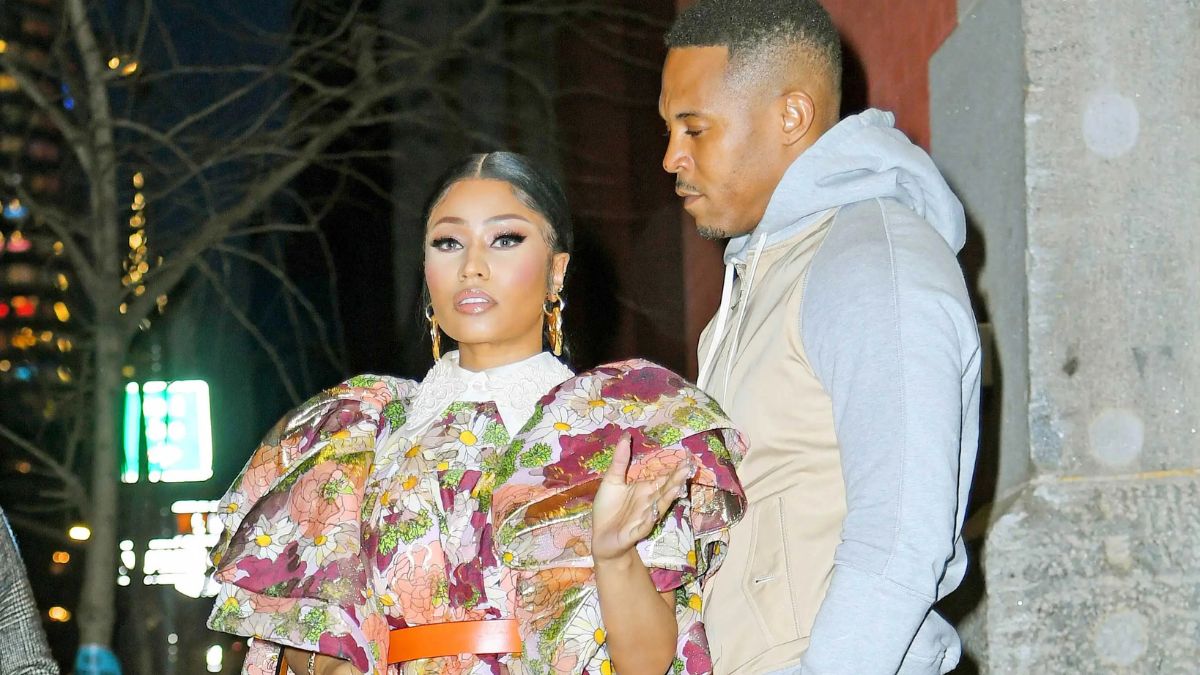TOPIC
The Art of Pickling: How to Make Your Own Gherkins at Home

If you’ve ever bitten into a crunchy, tangy gherkin and felt that delightful burst of flavor dance on your taste buds, you know just how special pickles can be. But have you ever considered making them yourself? The art of pickling is not only a fun kitchen adventure but also a way to preserve the freshness of your favorite vegetables. From zesty gherkins to vibrant carrot sticks, pickling opens up a world of culinary creativity right in your home.
Imagine walking into your kitchen and being greeted by jars filled with colorful veggies soaking in savory brine. It’s a satisfying sight, one that promises delicious rewards after just a bit of patience. Whether you’re looking to elevate your meals or impress friends at gatherings, crafting homemade gherkins is an excellent skill to add to your repertoire. So roll up those sleeves and let’s dive into the fascinating world of pickling!
What is Pickling?
Pickling is a time-honored method of preserving food. It involves immersing vegetables in a solution, typically vinegar or brine, to create a tangy flavor while extending shelf life.
This preservation technique works by inhibiting the growth of bacteria. The acidity of vinegar and salt creates an environment where harmful microbes can’t thrive.
Gherkins, often made from small cucumbers, are one of the most popular pickled items. Their crisp texture and refreshing taste shine when paired with spices like dill or garlic.
Beyond just cucumbers, you can pickle a variety of vegetables—carrots, radishes, and even beets! Each vegetable brings its unique crunch and flavor profile to the mix.
The beauty of pickling lies in its versatility. You can experiment with different ingredients to customize flavors that suit your palate perfectly.
The History of Pickling
Pickling dates back thousands of years, intertwining with human history. Ancient civilizations discovered that soaking vegetables in brine or vinegar could preserve them for longer periods. This method was not only practical but also a way to add flavor.
The earliest records come from Mesopotamia around 2400 BCE, where cucumbers were pickled in brine. Egyptians embraced this technique too, associating it with health benefits and even using pickles as offerings to their gods.
As trade routes expanded, so did the art of pickling. Different cultures adapted the process to suit local ingredients and tastes. By the Middle Ages, preservation techniques became essential for survival during harsh winters.
In Europe, gherkins gained popularity due to their crunchy texture and tangy taste. They quickly became a staple condiment at tables across various regions, influencing culinary traditions around the world.
Why Make Your Own Pickles?
Making your own pickles offers an incredible sense of satisfaction. There’s something special about transforming fresh vegetables into tangy delights.
Store-bought gherkins can often be loaded with preservatives and artificial flavors. By pickling at home, you have complete control over the ingredients. You can choose organic produce and natural spices, ensuring a healthier end product.
Home-pickled gherkins also provide a unique opportunity for culinary creativity. Want to spice things up? Experiment with different herbs or heat levels to craft a flavor profile that complements your taste buds perfectly.
Plus, it’s an economical choice. Purchasing jars from the store adds up quickly, while making them at home is budget-friendly. You’ll find joy in sharing your homemade creations with friends and family too; nothing beats the delight on their faces when they try your personalized pickles!
The Basic Pickling Process
The basic pickling process is simple and rewarding. First, gather your ingredients. Fresh cucumbers are the star of the show, but you can experiment with other vegetables too.
Start by washing your cucumbers thoroughly. Cut them into desired shapes—whole, spears, or slices work well based on your preference.
Next comes the brine. Combine water, vinegar, salt, and sugar in a saucepan over medium heat until dissolved. This mixture creates that signature tangy flavor we love in gherkins.
Once cooled, add spices like dill seeds or garlic for an extra kick. Place your cucumbers into sterilized jars and pour the brine over them until fully submerged.
Seal tightly and store them in a cool place for at least 24 hours to allow flavors to meld. For best results, let them sit longer before diving in!
Types of Vegetables to Use
When it comes to pickling, gherkins might steal the spotlight, but they aren’t your only option. A variety of vegetables can bring unique flavors and textures to your jars.
Cucumbers are a classic choice, providing that crisp crunch we all love. Baby cucumbers work particularly well for achieving the ideal gherkin size.
Carrots add sweetness and vibrant color. Their firm texture holds up beautifully during the pickling process.
Radishes offer a peppery bite that balances nicely with tangy brines. Slicing them thinly enhances their flavor absorption.
Green beans are another excellent candidate. They retain their snap while soaking up delicious seasonings.
Don’t overlook cauliflower or zucchini; both transform wonderfully in vinegar-based mixtures, offering delightful surprises in every bite.
Experimenting with different vegetables allows you to customize your pickles according to personal taste preferences and seasonal availability.
Creative Flavor Combinations
Experimenting with flavors can elevate your gherkins to a whole new level. Think beyond the classic dill and explore unique combinations that tantalize the taste buds.
For a spicy kick, add sliced jalapeños or crushed red pepper flakes to your brine. The heat mingles beautifully with the tartness of vinegar.
If you prefer something sweeter, try incorporating honey or maple syrup into your pickling solution. Pair this sweetness with ginger slices for an exciting fusion of flavors.
Herbs are also a fantastic way to customize your gherkins. Fresh rosemary, thyme, or even basil can impart delightful notes that surprise anyone biting into one.
Fruit peels like lemon or orange zest infuse brightness and complexity. A touch of garlic adds depth too—just be mindful of how much you use! Each combination is an opportunity for creativity in every crisp bite.
Tips and Tricks for Perfect Pickles
To achieve perfect pickles, start with fresh gherkins. The crunchier the cucumber, the better the pickle. Look for firm, young cucumbers without blemishes.
Next, pay attention to your brine. A classic mix of vinegar, water, salt, and sugar creates a balanced flavor. Experiment with different vinegars like apple cider or rice for unique tastes.
Don’t forget about spices! Dill is a must for traditional gherkins but try adding mustard seeds or garlic cloves for an extra kick. Fresh herbs can elevate your pickles even more.
Maintain proper storage conditions after pickling. Keep jars in a cool dark place; this will help enhance flavors over time.
Patience is key—allow your gherkins to marinate for at least 48 hours before tasting them. This waiting period allows all those wonderful flavors to meld together beautifully.
Conclusion
The world of pickling is rich and varied, offering an exciting avenue for culinary exploration. Making your own gherkins at home not only allows you to enjoy fresh flavors but also connects you with a time-honored tradition. From selecting the right cucumbers to experimenting with spices and herbs, every step in the process can be tailored to suit your taste.
By understanding the basics of pickling and incorporating creative flavor combinations, you can elevate your gherkin game beyond store-bought options. Plus, sharing homemade pickles with friends and family always brings a smile.
So roll up your sleeves, gather those ingredients, and start crafting delicious gherkins that reflect your unique palate. Happy pickling!
TOPIC
Fame and Misfortune: Life as the ‘Ugliest Person in the World’

In a world that often worships beauty, the harsh truth is that not everyone fits the mold. Society is obsessed with appearances, constantly bombarding us with images of perfection. But what happens to those who don’t conform? This blog explores one extraordinary story—the journey of Lizzie Velasquez. Dubbed the ‘ugliest person in the world,’ Lizzie’s experience shines a light on cyberbullying and body shaming, showcasing how cruel labels can shape lives. Yet amidst this pain lies an inspiring narrative of resilience and self-acceptance that challenges conventional notions of beauty. Join us as we dive into her powerful story and uncover valuable lessons about inner strength and societal change.
The Story of Lizzie Velasquez: A Constant Target of Cyberbullying and Body Shaming
Lizzie Velasquez’s journey began in a world that often equates beauty with worth. Born with a rare genetic condition, she was labeled the “ugliest person in the world” at just 17 years old. This cruel title came from an online video that sparked relentless cyberbullying.
Every day became a battle against hateful comments and body shaming. The internet can be a harsh place, especially for someone vulnerable to society’s unrealistic standards of beauty. Lizzie faced unsolicited judgments about her appearance and health, leading many to forget her remarkable spirit.
Despite this onslaught of negativity, Lizzie refused to let it define her. Instead of conforming to societal expectations, she chose to embrace her uniqueness. Her story is not just one of hardship but also resilience as she transformed pain into purpose through advocacy and empowerment.
The Emotional Toll of Being Labeled as the ‘Ugliest Person in the World’
Being labeled as the “ugliest person in the world” carries an immense emotional burden. For many, this label becomes a heavy weight, affecting self-esteem and mental health in profound ways.
The constant scrutiny can lead to feelings of isolation. It creates a barrier between oneself and the outside world. Instead of connection, there’s often loneliness and despair.
Every harsh comment or cruel joke chips away at one’s confidence. The pain isn’t just skin deep; it penetrates the very core of identity.
Living with such stigma can be exhausting. Each day may feel like a battle against societal norms that prioritize beauty over individuality.
Despite this, resilience emerges from such struggles. Many find strength in vulnerability, turning their pain into powerful narratives that resonate with others facing similar challenges.
Fighting Back Against the Bullies: Lizzie’s Journey Towards Self-Love and Acceptance
Lizzie Velasquez has faced unimaginable challenges throughout her life. Labeled the “ugliest person in the world,” she became a target for bullies and online trolls. But instead of succumbing to despair, Lizzie chose to fight back.
She began by sharing her story with the world. Each speech and video became a powerful testament to resilience. Through vulnerability, she inspired countless others who felt marginalized or misunderstood.
As Lizzie embraced self-love, she learned that beauty exists far beyond physical appearance. Her journey was not just about acceptance but also empowerment. She discovered strength within herself that no critique could diminish.
With each passing day, Lizzie transformed negativity into fuel for positivity. By advocating for kindness and compassion, she challenged societal norms surrounding beauty standards and encouraged others to celebrate their uniqueness unapologetically.
The Power of Inner Beauty: Lessons Learned from Lizzie’s Experience
Lizzie Velasquez embodies the essence of inner beauty. Despite being labeled as the “ugliest person in the world,” she radiates strength and resilience. Her journey teaches us that true beauty stems from our character, not our appearance.
Every time Lizzie faces negativity, she counters it with positivity. She embraces her uniqueness and encourages others to do the same. Her infectious spirit inspires many to redefine their understanding of worth.
Her experience highlights a crucial lesson: kindness and compassion outweigh superficial judgments. The courage to look beyond physical attributes transforms how we see ourselves and others.
By focusing on inner qualities such as empathy, love, and determination, we can create a more inclusive society where everyone feels valued. Lizzie’s story serves as a powerful reminder that authentic beauty shines brightest when nurtured from within.
Changing Society’s Standards: How We Can Stop
Changing society’s standards begins with conversation. We need to talk about beauty in a broader sense. Engaging discussions can shift perceptions and broaden horizons.
Education plays a crucial role. Schools should incorporate lessons on body positivity and self-acceptance into their curriculums. Teaching empathy can foster understanding from an early age.
Social media is another powerful tool for change. Influencers and celebrities who promote authentic beauty challenge traditional norms. Their voices reach millions, reshaping the narrative around appearance.
Supportive communities matter too. Creating safe spaces where individuals share experiences helps combat negativity. It encourages everyone to embrace their uniqueness without fear of judgment.
We must hold media accountable for their portrayals of beauty. Advocacy for diverse representation in films, advertisements, and magazines cultivates acceptance among audiences everywhere.
Conclusion
Society’s obsession with beauty often creates a narrow definition of what is considered attractive. This fixation can lead to harmful labels, such as the one sadly bestowed upon Lizzie Velasquez, who was infamously dubbed the “ugliest person in the world.” Despite this dehumanizing title, Lizzie has shown incredible resilience and strength.
Her journey through cyberbullying and body shaming illustrates an emotional toll that many face when society imposes its standards on them. However, rather than succumbing to despair, she chose to fight back against her bullies. Through self-love and acceptance, Lizzie transformed her narrative from victimhood to empowerment.
The lessons we learn from her experience are profound. Inner beauty shines brighter than any external standard set by others. It’s essential for us all to embrace our uniqueness and reject societal pressures that dictate how we should look or feel about ourselves.
Changing these deeply ingrained societal standards starts with each of us. We must be mindful of our words and actions towards others while promoting a culture that values kindness over cruelty. By doing so, we contribute to a future where labels like “the ugliest person in the world” become relics of a less compassionate past—allowing everyone to thrive without fear of judgment based on appearances alone.
TOPIC
The Science Behind Why Some Baby That Can Hoot

Have you ever heard a baby let out a sound that resembles an owl’s hoot? It’s both surprising and delightful. The phenomenon of babies who can imitate this unique noise has puzzled many parents and experts alike. Some children seem to possess this quirky talent naturally, while others may take some inspiration from their surroundings. What drives these little ones to produce such distinctive sounds? Today, we’ll explore the science behind why some babies can hoot, revealing the intriguing interplay of genetics, environment, and even parental influence that shapes this adorable behavior. Join us as we dive into the world of vocal exploration in our tiniest family members!
The Role of Genetics in Baby Hooting Abilities
Genetics play a fascinating role in a baby’s ability to hoot. Just like eye color or height, vocalization skills can be inherited. Certain genetic traits may influence muscle control and sound production in infants.
Research suggests that some babies might have a natural predisposition for unique sounds. This talent could be linked to specific genes related to vocal cord development and auditory processing.
Families with musical backgrounds often produce children who exhibit extraordinary vocal skills early on. These hereditary patterns hint at an innate potential for expressive communication.
However, while genetics provide the foundation, they don’t guarantee proficiency alone. Every child is different; their environment and experiences will shape their abilities as much as their DNA does.
How Environmental Factors Can Influence Baby’s Ability to Hoot
Environmental factors play a significant role in shaping a baby’s ability to hoot. Sound exposure is crucial during the early months. Babies are highly receptive to different noises around them, from chirping birds to playful sounds made by family members.
A stimulating environment can encourage vocal experimentation. If a baby frequently hears varied sounds, they may be more likely to mimic those noises, including the charming hooting sound.
Moreover, the presence of siblings or pets can further enrich this auditory landscape. Interaction with these companions often leads babies to explore their voices and develop unique expressions.
Additionally, cultural influences cannot be overlooked. In some cultures where singing and vocal play are common practices, children might show an inclination toward imitating those sounds earlier than others.
Creating an engaging atmosphere filled with diverse audio experiences could unlock your little one’s hidden talents.
The Impact of Parental Behavior on a Baby’s Hooting Skills
Parental behavior plays a crucial role in shaping a baby’s ability to hoot. When caregivers vocalize playfully, it encourages similar responses from their little ones. Mimicking sounds and engaging in playful communication can spark curiosity.
Interaction is key. Babies thrive on social engagement. Frequent conversations filled with varied tones can inspire them to explore new sounds, including the captivating hoot.
Moreover, exposure matters. If parents create an environment rich in sound—like playing nature recordings or animal noises—the baby may be more inclined to experiment with their own vocalizations.
Positive reinforcement also boosts confidence. Celebrating each attempt at hooting motivates babies to continue expressing themselves audibly and creatively, fostering a sense of achievement.
Each child’s journey is unique; attentive parenting can cultivate these special talents effectively over time without pressure or expectation.
Other Factors That May Contribute to a Baby’s Hooting Ability
Several intriguing factors can influence a baby’s ability to hoot. For instance, exposure to varied sounds during pregnancy might play a role. Babies are known to respond to music and other rhythmic patterns even before they’re born.
Postnatal experiences also matter. Infants who grow up in households filled with diverse auditory stimuli may develop their vocal skills more rapidly. This includes everything from playful interactions to regular conversations among family members.
Health considerations cannot be overlooked either. A baby’s overall health and development can impact their vocalization abilities. Conditions affecting hearing or respiratory function could potentially limit how well they express themselves through unique sounds.
The presence of pets can spark curiosity and mimicry in babies, leading them to imitate animal noises like hooting. The environment around a child is often rich with learning opportunities that shape their communication style in unexpected ways.
Tips for Encouraging Your Baby that can Hoot
Encouraging your baby that can hoot can be a joyful journey. Start by mimicking the sound yourself. Babies love to imitate, and your enthusiastic “hoot” might just spark their interest.
Create a playful environment filled with sounds. Use toys or recordings of owls hooting. This auditory stimulation can inspire them to experiment with their own vocalizations.
Engage in face-to-face interactions during playtime. Make eye contact and smile while encouraging them to make different sounds. Your encouragement will boost their confidence.
Read books featuring animals that hoot, like owls. The colorful illustrations combined with storytelling can capture your baby’s attention and prompt them to join in on the fun.
Celebrate every attempt they make, no matter how small it is. Positive reinforcement goes a long way in nurturing their unique talents and fostering creativity.
Conclusion: Embracing the Unique Talents of Every Child
Every child is a unique bundle of joy, and those who possess the special talent of hooting add an extra layer of wonder to parenting. Whether it’s genetics, environment, or simply their own quirky personality shining through, these babies bring smiles and laughter to everyone around them.
Encouraging your baby that can hoot not only nurtures their development but also strengthens the bond between you. Celebrate this delightful ability as part of their growth journey. After all, every little sound they make is a step towards discovering their voice in this big world.
Embrace the quirks that come with each child’s development. Each “hoot” might just be the beginning of something extraordinary—a reflection of individuality that’s worth cherishing as they grow.
TOPIC
Exploring Kenneth Petty Impact on Pop Culture and Beyond

Kenneth Petty is a name that has become synonymous with both allure and controversy in the entertainment world. As the husband of rap superstar Nicki Minaj, he has stepped into the limelight, drawing attention from fans and critics alike. But who exactly is Kenneth Petty beyond his famous partner? His journey from a challenging upbringing to becoming a prominent figure in pop culture is as intriguing as it is complex.
Petty’s multifaceted life encompasses music, personal struggles, and legal battles—an intricate tapestry woven with threads of fame and notoriety. His influence extends far beyond just his relationship with Minaj; it touches various aspects of social media trends, internet culture, and even community involvement. The narrative around Kenneth Petty continues to unfold as he navigates both acclaim and backlash. Join us as we delve deeper into Kenneth Petty’s impact on pop culture—and discover how this enigmatic figure leaves an indelible mark on our society today.
Rise to Fame and Controversies
Kenneth Petty’s rise to fame was anything but ordinary. Initially known as Nicki Minaj’s partner, he quickly became a figure of interest in the entertainment world. His relationship with one of music’s biggest stars put him in the spotlight.
However, this rise wasn’t without its share of controversies. Kenneth faced significant scrutiny due to his past legal issues, which sparked debates across social media platforms. Critics often highlighted these troubles when discussing his public persona.
The juxtaposition between celebrity status and personal history created a complex narrative that fascinated fans and critics alike. Some viewed him through a lens of redemption while others remained skeptical. This duality has only fueled conversations about accountability and growth within popular culture.
Influence on Pop Culture Through Music Industry
Kenneth Petty’s influence on pop culture extends significantly through his connections within the music industry. As a figure closely associated with Nicki Minaj, he has managed to carve out a unique niche that resonates with fans.
His collaborations and appearances have brought an edge to mainstream music. This visibility has allowed him to impact trends and conversations surrounding hip-hop culture.
Petty’s presence in music videos and live performances adds depth, often sparking discussions about authenticity and relationships in the industry. Musicians frequently draw inspiration from personal narratives, and Petty embodies this narrative arc.
The interplay between his life experiences and musical artistry fosters engagement among listeners. Fans are keenly aware of how these dynamics shape their favorite artists’ stories, creating a cultural dialogue rich with emotion and relevance.
Impact on Social Media and Internet Culture
Kenneth Petty’s presence on social media has sparked significant conversations. His interactions often reflect a blend of authenticity and controversy, drawing attention from both fans and critics.
The hashtags associated with his name frequently trend across platforms like Twitter and Instagram. This influence creates ripples in online discussions about relationships, fame, and personal struggles. His candid posts offer followers an unfiltered glimpse into his life.
Moreover, memes featuring Kenneth have made their rounds on various forums. These playful interpretations highlight the duality of celebrity culture—adulation mixed with scrutiny. Fans engage in sharing their perspectives, fueling debates that extend beyond just music or personal branding.
As part of Nicki Minaj’s orbit, he amplifies her narratives while also cultivating his own identity within the digital landscape. The dynamic interplay between them affects public perception, making him a focal point for discourse surrounding modern pop culture figures.
Petty’s Relationship with Nicki Minaj and their Public Image
Kenneth Petty’s relationship with Nicki Minaj has undeniably shaped their public image. The couple’s romance became a topic of heated discussion as they often shared glimpses of their life together on social media.
Fans were quick to react, expressing both support and skepticism. While some celebrated the love story, others raised eyebrows due to Petty’s controversial past.
Nicki has been known for her fierce loyalty. She defended Kenneth against critics and highlighted his role in her life. This provided a glimpse into a more personal side of the superstar.
As they navigated the complexities of fame, their bond became intertwined with both admiration and scrutiny from fans and media alike. Their dynamic illustrates how powerful relationships can impact celebrity personas in today’s fast-paced digital landscape.
Beyond Pop Culture: Petty’s Legal Troubles and Community Involvement
Kenneth Petty’s life extends beyond the glitz and glamour of pop culture. His legal issues have often overshadowed his personal journey. With a criminal history that includes convictions for attempted rape, these troubles serve as reminders of his complicated past.
Despite this, Petty has shown a desire to give back to the community. Engaging in local charity events demonstrates an effort to break away from previous mistakes and make a positive impact on those around him.
His relationship with Nicki Minaj also plays into this narrative. Together, they advocate for various social causes, showcasing their ability to use fame for good.
While controversies may define parts of Petty’s story, there’s more than just headlines surrounding him. The complexities of his character continue to spark discussions about redemption and responsibility in today’s society.
Conclusion: The Legacy of Kenneth Petty in the Entertainment World
Kenneth Petty journey through the entertainment world is a complex tapestry woven with influence, controversy, and undeniable impact. Rising to fame alongside his partner Nicki Minaj has placed him in the spotlight, making him a notable figure not only within music but across various facets of pop culture.
His presence on social media has transformed how fans engage with celebrity relationships. Kenneth’s life experiences resonate with many people, igniting conversations about love, loyalty, and personal growth. This connection extends beyond just his romantic ties; it encompasses broader discussions around identity and self-expression.
While his legal troubles have cast shadows over his public image at times, they highlight the challenges faced by many who navigate fame. His community involvement illustrates that he aims to give back despite facing hurdles.
Kenneth Petty’s legacy is multifaceted. He remains an essential part of discussions surrounding modern celebrity culture while also serving as a reminder that everyone can grow and change amidst adversity. The narrative he continues to build reflects both the highs and lows of being in the limelight—leaving an indelible mark on today’s entertainment landscape.
-

 TOPIC6 days ago
TOPIC6 days agoIs Checwifeswap Right for You? Pros and Cons Explained
-

 TOPIC1 month ago
TOPIC1 month agoThe Significance of 17029009482: An In-Depth Exploration
-

 TOPIC6 days ago
TOPIC6 days agoWhy Magdalenavuk15 is Making Waves in the Blogging Community
-

 TOPIC1 month ago
TOPIC1 month agoTinkerdinky: A Playful Approach to Innovation and Design
-

 TOPIC1 month ago
TOPIC1 month agoTop Features of the Denso 10PA17 447220-4771 You Should Know
-

 TOPIC2 weeks ago
TOPIC2 weeks agoThe Evolution of ICS15014849: What You Need to Know
-

 HEALTH1 month ago
HEALTH1 month agoThe Benefits and Risks of Emervuy Surgery Explained
-

 TOPIC3 weeks ago
TOPIC3 weeks agoTronics Orul1108: Revolutionizing Your Tech Experience
